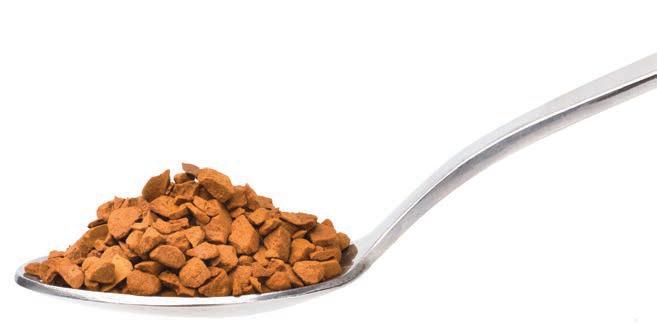PROFILE Probat
Coffee’s carbon footprint BASED ON THE CALCULATION OF THE CARBON FOOTPRINT OF A SINGLE CUP OF COFFEE, GERMAN ROASTING MANUFACTURER PROBAT ANALYSED AND IMPROVED THE EMISSIONS OF COFFEE ROASTING FACILITIES.
W
ith coffee a crop particularly vulnerable to changing temperatures, the consumption side of the supply chain is becoming increasingly aware of its own contribution. “With people around the world walking the streets, fighting for a better climate, the industry can’t ignore its carbon footprint anymore,” says Oliver Böwing, Product Manager at German roasting equipment and plant manufacturer Probat. When Probat turned 150 in 2018, it commemorated its sesquicentennial with the Connecting Markets Symposium. At the event, Böwing wanted to raise the industry’s role in climate change, and looked into the carbon emissions of coffee. Several years earlier, German coffee chain Tchibo had released a report analysing the carbon footprint of the entire coffee supply chain, from growing the plant to brewing the beverage. It determined that a cup of coffee, brewed with seven grams of coffee and 125 millilitres of water, was responsible for 60 grams of carbon emissions. “Before improving our own contributions, we have to understand what they are,” Böwing says. “For a product like coffee, which is not necessarily essential for living and can be considered a luxury, it’s even more important to understand how it can be improved.” The report determined that coffee farming contributed to more than half of its total carbon
Figure 1. Roasting and grinding makes up one-20th of a cup of coffee’s carbon footprint.
46
G C R | M AY /J U N E 2 0 2 0
footprint, largely due to the amount of water and fertiliser used in growing the plant. Coffee brewing factored in for roughly 30 per cent of emissions due to the energy used to heat water. Waste disposal, sales, and overseas transport totalled about 10 per cent (see Figure 1.) “What was quite surprising for us is that roasting and grinding only had a 5 per cent share of that 60 grams per cup of coffee,” Böwing says. “But I wasn’t sure what 60 grams actually meant, whether it was good or bad. I wanted to show the industry what 60 grams actually is in the grand scheme of things.” To do this, Böwing looked for information on the carbon footprint of other everyday products. A 500-gram bowl of strawberries produces 442 grams of carbon. Ten rolls of three-ply toilet paper contribute 2500 grams. His 50-kilometre roundtrip to and from work totalled 5500 grams of carbon emissions each day. “If you look at a bowl of strawberries, one cup of coffee is not a problem. In Germany, we drink about three or four cups per day and that is still way below their footprint,” Böwing says. “All things considered, 60 grams of carbon may be a lot for a luxury item like coffee, but compared to something like transport, it’s still minor.” While the report found that roasting and grinding contributed 3.18 grams of the total 60, Böwing felt that only factored in the actual roasting process and didn’t reflect the total emissions of a roasting plant. This inspired him and Probat to determine the total emissions of a complete roasting facility. With Probat’s Jupiter 3000 roaster as a base, popular in industrial roasting, Böwing used a





















